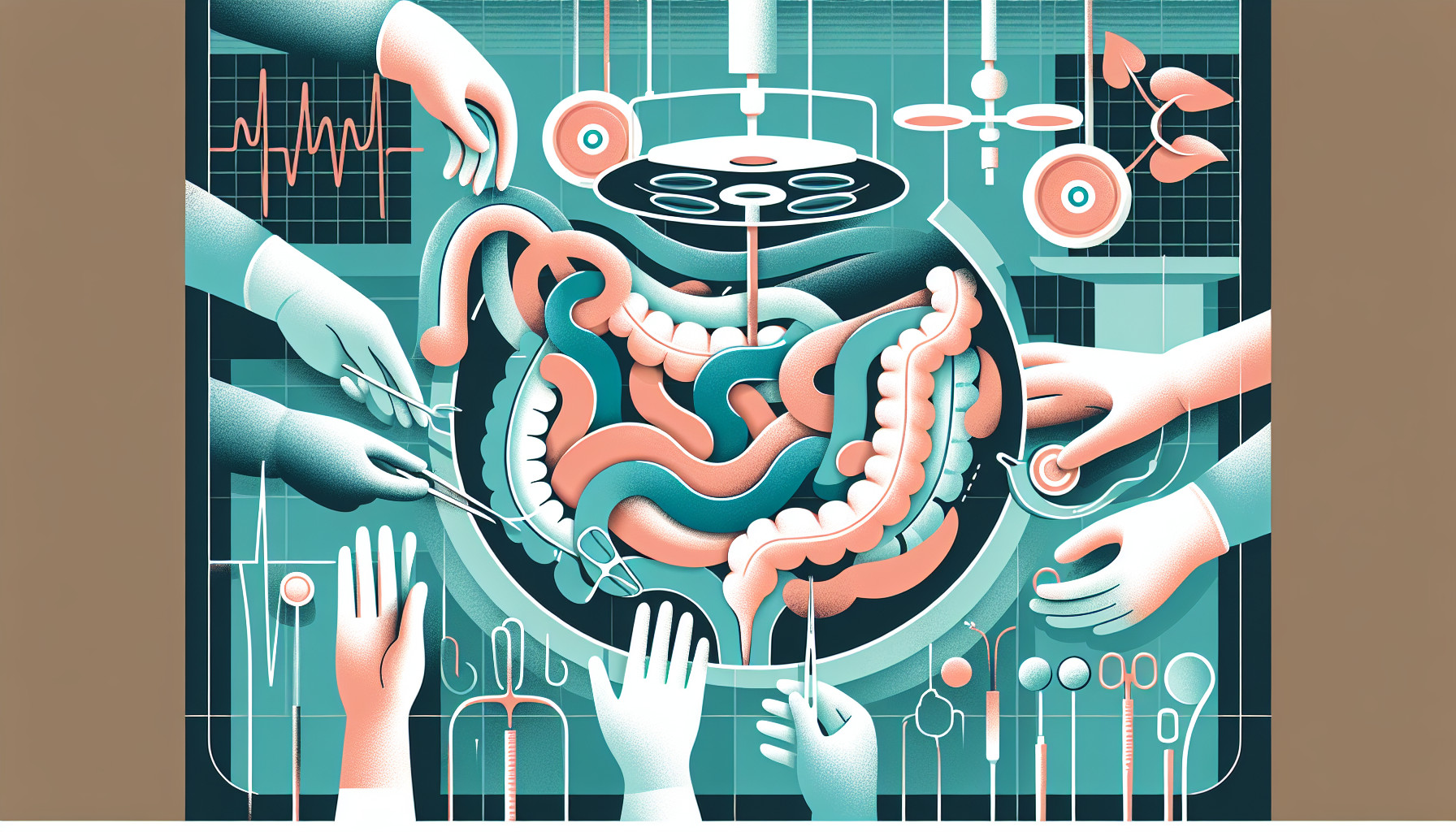Our Summary
This research paper compares two different surgical methods: robotic colectomy and three-dimensional (3D) laparoscopic colectomy. Both of these methods are used in the removal of part of the colon due to cancer. The study looked at surgeries performed over a year, with 24 being done robotically and 23 using the 3D laparoscopic method.
The results showed that the median time of the operation was longer for the robotic method, but the rate of needing to switch to a more traditional surgical method and the number of lymph nodes removed was similar for both methods. Patients who had the robotic surgery on the right side of the colon were able to pass gas 1 day after surgery, and those who had the 3D laparoscopic surgery were able to pass gas 2 days after surgery.
Patients who had the 3D laparoscopic surgery on the right side of the colon could eat 1 day after surgery, while those who had the other types of surgery could eat 2 days after surgery. The cost of the robotic surgery was significantly higher than the 3D laparoscopic surgery.
In conclusion, while both methods have similar benefits for the patient, the difference in cost is significant. In surgeries on the left side of the colon, robotic surgery yielded better results, especially when the surgery came close to the rectum.
FAQs
- What are the two surgical methods compared in this research paper and what are they used for?
- What were the results of the comparison between robotic colectomy and 3D laparoscopic colectomy?
- What is the difference in cost between robotic surgery and 3D laparoscopic surgery?
Doctor’s Tip
A helpful tip a doctor might tell a patient about laparoscopic colectomy is to follow the post-operative instructions carefully, including taking pain medication as prescribed, gradually increasing physical activity, and eating a healthy diet to promote healing. It is also important to attend all follow-up appointments to monitor recovery progress and address any concerns.
Suitable For
Patients who are typically recommended for laparoscopic colectomy include those with conditions such as colon cancer, diverticulitis, inflammatory bowel disease, and benign polyps that cannot be removed through other methods. Laparoscopic colectomy is often recommended for patients who are otherwise healthy and have a lower risk of complications during surgery. It is also recommended for patients who want a quicker recovery time and less scarring compared to traditional open surgery. Additionally, patients who are not good candidates for open surgery due to previous abdominal surgeries or medical conditions may also be recommended for laparoscopic colectomy.
Timeline
Before laparoscopic colectomy, a patient may experience symptoms such as abdominal pain, bloating, changes in bowel habits, and weight loss. They would undergo diagnostic tests such as a colonoscopy and CT scan to confirm the need for surgery.
After the laparoscopic colectomy, the patient would typically spend a few days in the hospital for monitoring and pain management. They would gradually start to eat solid foods and begin walking to aid in their recovery. Follow-up appointments with the surgeon would be scheduled to monitor healing and address any concerns. Over time, the patient would gradually return to normal activities and experience improved quality of life.
What to Ask Your Doctor
- What are the potential risks and complications associated with laparoscopic colectomy?
- How long is the recovery period after laparoscopic colectomy?
- Will I need any additional treatments or medications after the surgery?
- What are the chances of the cancer returning after laparoscopic colectomy?
- How many surgeries of this type have you performed, and what is your success rate?
- Will I have any restrictions on my diet or activities after the surgery?
- How will my pain be managed after the surgery?
- What follow-up appointments or tests will I need after the surgery?
- Are there any long-term effects or complications I should be aware of?
- How does the cost of laparoscopic colectomy compare to other surgical methods?
Reference
Authors: Guerrieri M, Campagnacci R, Sperti P, Belfiori G, Gesuita R, Ghiselli R. Journal: World J Gastroenterol. 2015 Dec 14;21(46):13152-9. doi: 10.3748/wjg.v21.i46.13152. PMID: 26674518
